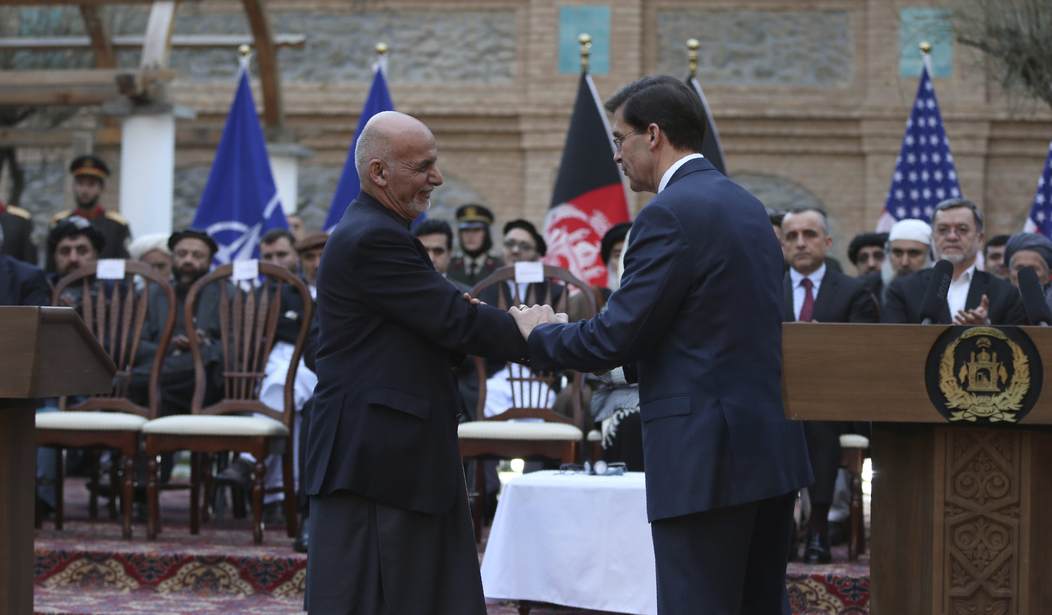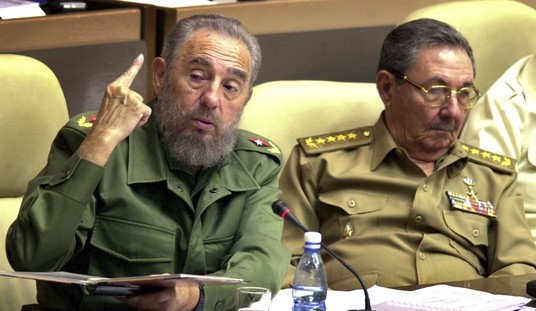Nothing illustrates the folly of our 18-year-long nation-building mission in Afghanistan better than the partial peace bought by a months-long negotiation breaking down after just 72 hours.
#BREAKING Taliban ends partial truce, to resume Afghan 'operations': spokesman pic.twitter.com/tRA6gZBAVK
— AFP news agency (@AFP) March 2, 2020
AFP also reports, “three killed, 11 injured in blast in east Afghanistan,” so you know the Taliban wasn’t kidding around. The “operation,” as the Taliban likes to call it, or “savage terror attack,” as any honest person would call it, was in response to confusion between the Trump White House and the Afghan central government over the release of up to 5,000 Taliban prisoners.
The New York Times reported on Sunday:
The Trump administration’s blueprint for the peace talks included a provision that up to 5,000 Taliban prisoners “will be released” by the time the next round of negotiations, with the Afghan government, begin on March 10. Any remaining prisoners could be released over the following three months, according to the document.
“The United States commits to completing this goal,” the document stated.
The first snags in the process were apparent less than 24 hours later.
But Afghan President Ashraf Ghani said on Sunday that “There is no commitment to release the Taliban prisoners,” and that doing so “can’t be a precondition” for continued peace talks. Secretary of State Mike Pompeo reminded Face the Nation yesterday morning that “There have been prisoner releases from both sides before; we have managed to figure our path forward,” but maybe 5,000 was just too big a figure for Ghani to swallow.
The sane U.S. response would be to pack it up and go home.
There’s no peace to be found in Afghanistan, at least not with the low level of violence we’re willing to commit there. More than 18 years after the attacks of 9/11/2001, the American people don’t have the stomach for killing the number of fighting-age males it would take to force peace on the Taliban. And any attempt at a power-sharing arrangement between the Taliban and Kabul — the administration’s current goal — is doomed to failure. Kabul is corrupt to its core, and will never earn the love or respect of the Afghan people. As for the Taliban, for them, power-sharing is nothing more than a necessary step on the way to toppling the Ghani government. Even then, fighting in the countryside would continue, so it doesn’t matter much who ostensibly is in charge in Kabul.
“But that’s the place where Osama bin Laden trained al Qaeda and launched the 9/11 attacks!” some people still say. But so what? As our own Richard Fernandez wrote in 2010:
To jump from the correct idea that defeating the forces which “attacked American on 9/11” were an existential threat to the idea that ergo Afghanistan was a war of necessity was a huge non sequitur. Afghanistan happened to be the place from which Osama Bin launched his attack on September 11. Admiral Nagumo launched his infamous attack on Pearl Harbor from a nameless patch of ocean 200 miles North of Oahu. But Admiral King had the sense to understand that the location itself had little significance. It was the Kido Butai, the ten carriers which made up the Japanese Fast Carrier force which momentarily occupied that ocean waste that he had to destroy. While the Kido Butai existed it could move across the vast spaces and attack at a point of its choosing. While it survived every patch of ocean was dangerous. Once it had been neutralized all the oceans of the world were potentially safe.
Yet here we are ten years after Fernandez wrote that, which was nearly nine years after 9/11, still trying to make a nation out of the untamable patch of ground from which the attacks were launched.
There is no such thing as “the Afghan people.” The country is largely split between speakers of Dari and Pashto, plus another nine or ten percent split up into even more languages. Dari is a close relative of Iran’s predominant Farsi language. Pashto is less closely related and also split into more than 20 dialects.
The country is even further split into various Persian and Turkic ethnicities. That’s two majors, five minors, and then a bunch more even tinier groups.
Afghanistan is not, and never was a nation-state. It’s a hole in the map where neighboring nation-states aren’t. And like the old joke definition of a boat (“it’s a hole in the water, surrounded by wood, into which one pours money”), Afghanistan is a hole in the world into which we pour blood and treasure.
But this is no joke. It’s time to stop.











Join the conversation as a VIP Member